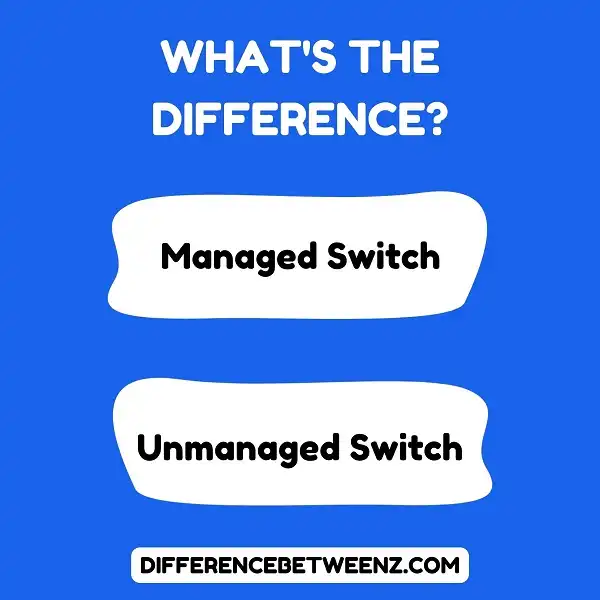Whether you are a business or home user, at some point you will need to make a decision on whether to buy a managed or unmanaged switch. Both switches have their benefits and drawbacks, but which one is right for you? In this blog post, we will break down the differences between these two types of switches and help you decide which one is better for your needs.
What is Managed Switch?
Managed switches are network switches that give administrators the ability to manage, configure and monitor the switch. Managed switches also provide advanced features such as Quality of Service (QoS), VLANs, port mirroring, link aggregation, and more. Managed switches are typically more expensive than unmanaged switches but offer a lot more features and flexibility. Managed switches are often used in enterprise networks or other large-scale networks where it is important to have granular control over the network.
What is an Unmanaged Switch?
- Unmanaged switch is a Ethernet switch which doesn’t require any configuration and management. Unmanaged switch is preconfigured out of the box with default settings that are suitable for most small businesses and home offices.
- Unmanaged switch doesn’t offer features like Quality of Service (QoS), VLANs, Port Security, etc. Also, the user cannot access or change the configuration of an unmanaged switch.
- The only thing that a user can do with an unmanaged switch is to plug it in and it will start working. Unmanaged switches are typically used in small networks where there is no need for advanced features. Unmanaged switches are also much cheaper than managed switches.
Difference between a Managed and Unmanaged Switch
A Managed Switch is a network switch that can be configured and managed remotely. Managed switches offer more features and capabilities than Unmanaged switches, including the ability to monitor and manage traffic flowing through the switch.
- Managed switches also support Quality of Service (QoS) features, which can be used to prioritize time-sensitive traffic such as VoIP or video streaming.
- In contrast, Unmanaged switches are designed to work right out of the box with no configuration required. Unmanaged switches cannot be monitored or managed remotely, and do not support QoS features.
- As a result, they are typically much less expensive than Managed switches. For most home and small office networks, an Unmanaged switch will be sufficient. However, for larger business networks or networks with more sensitive data traffic, a Managed switch may be a better option.
Conclusion
An unmanaged switch is less expensive, and it can be used for a small network. A managed switch provides more features and better performance. If you are looking for a low-cost option that will still allow you to manage your network traffic, an unmanaged switch is the best option. However, if you need more features or want a higher level of performance, then a managed switch is the right choice.


